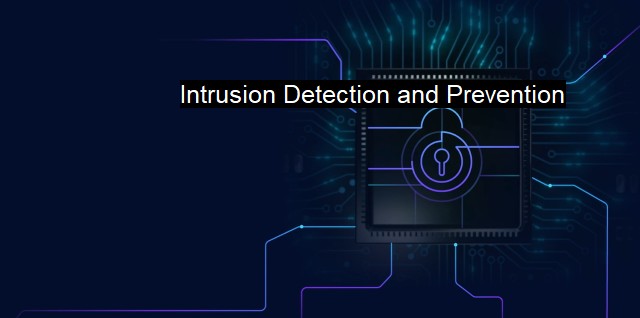What is Intrusion Detection and Prevention?
Intrusion Detection and Prevention (IDP) Systems: Safeguarding Your Network from Known and Unknown Threats
Intrusion Detection and Prevention (IDP) is a modern-day tool used to safeguard networks and systems in the digital landscape. It is mainly instrumental within the cybersecurity field, similar to an antivirus platform; it boasts of a different degree of capability. This model consists of two main mechanisms - detection and prevention, both giving it potential protective dimensions against malicious events that could harm the system.Intrusion Detection System (IDS) and Intrusion Prevention System (IPS) are two different parts of the IDP. Both components work harmoniously, monitoring and analyzing network traffic based on particular security rules or identifiable patterns of malicious activity. It's much like a combination of the human immune system that constantly checks for foreign objects, and an efficient guardian who alerts the system administrators or takes action against perceived threats immediately.
An IDS, as the name suggests, is a system designed to detect possible incidents and violations of the system. Often, IDS act as alarm systems monitoring network traffic for suspicious activity or anomalies. They are capable of identifying harmful entities, known as malware, which operates silently, behind interfaces, stealing, corrupting or nullifying data breach attempts by hackers. Once these are detected, the IDS alerts the network administrators, allowing them to take necessary actions. They can also be configured to log the harmful activity or slow down the operations being executed to curtail the extent of the damage.
Absolute reliance on manual intervention introduces human latency to the equation. Here is where the role of IPS becomes significant. The devices on which IPS are installed can block prohibited packets and halt attacks via an immediate response. When potentially harmful activities are detected, instead of sending an alert, IPS will take immediate action. The intelligence of Plata IPS lies in its capacity for decision-making since it can determine not only the identification of the threat but to deal with it without human intervention. This immediate response could include measures like ending the detected sessions or reconfiguring specific security devices to ward off the threat.
The IDP is commonly used in combination with firewalls, antivirus software, and other security applications to form an integrated security strategy. By synergizing capabilities, this approach ensures higher efficacy rates in keeping systems secure, making the digital space conducive to a variety of operations. Unlike antivirus applications, which focus on protecting systems from known and documented threats, mainly virus files, IDP protection is comprehensive - ranging from known malicious behavior forms to unsuspected attacks.
It is worth noting that antivirus capabilities also coexist within the framework of comprehensive IDP policy just like an extension that contribute to the protection foundation. This union forms a robust shield against both known viruses and unanticipated network attacks. Therefore, this approach provides wholesome protection against current evolving threats.
Intrusion Detection and Prevention forms a critical aspect of cybersecurity today. With alarming rates at which data breaches and cyber-attacks surface, every datum in the cyber world becomes an asset that needs protection. The IDP, coupled with its abilities and apt intrusion/scanning mechanism, comes across as an indispensable ally in this context, which exhibits unparalleled prowess in predicting, identifying, and thwarting such malicious intents. With the use of advanced technology and sophisticated algorithms, IDP systems stay steps ahead of potential threats, thereby providing a security blanket for data and digital resources in our modern interconnected cyber world.

Intrusion Detection and Prevention FAQs
What is intrusion detection and prevention (IDP)?
Intrusion detection and prevention refer to the security measures implemented to detect and prevent unauthorized access, attacks, and malicious activities on computer systems, networks, and applications. IDP is an essential component of cybersecurity and antivirus solutions.What are the types of intrusion detection and prevention?
There are two main types of IDP: Host-based intrusion detection and prevention system (HIDS/HIPS) and Network-based intrusion detection and prevention system (NIDS/NIPS). HIDS/HIPS monitors and analyzes the activity and behavior of a single host or endpoint device, while NIDS/NIPS examine the traffic and data packets flowing across a network.What are the benefits of intrusion detection and prevention?
Implementing IDP can provide several benefits such as detecting and blocking malicious activities, preventing and mitigating cyber attacks, reducing the risk of data loss, enhancing regulatory compliance, and improving overall cybersecurity posture.What are the challenges associated with intrusion detection and prevention?
IDP is not a panacea, and there are several challenges associated with its implementation and management. Some of the common challenges include false positives and false negatives, limited visibility and coverage, high cost, complexity and maintenance, and the need for continuous updates and upgrades to stay ahead of evolving threats.| | A | | | B | | | C | | | D | | | E | | | F | | | G | | | H | | | I | | | J | | | K | | | L | | | M | |
| | N | | | O | | | P | | | Q | | | R | | | S | | | T | | | U | | | V | | | W | | | X | | | Y | | | Z | |
| | 1 | | | 2 | | | 3 | | | 4 | | | 7 | | | 8 | | |||||||